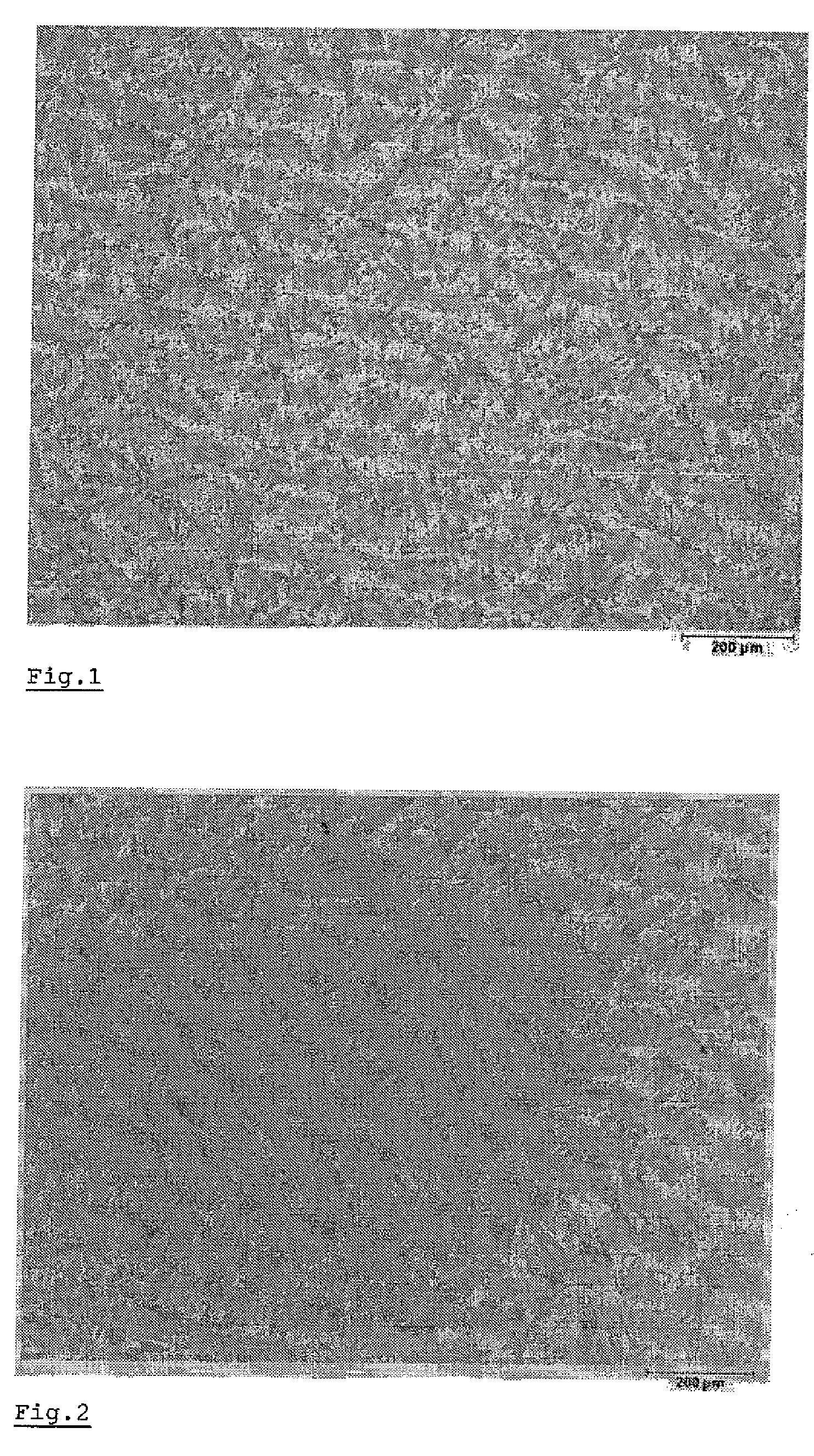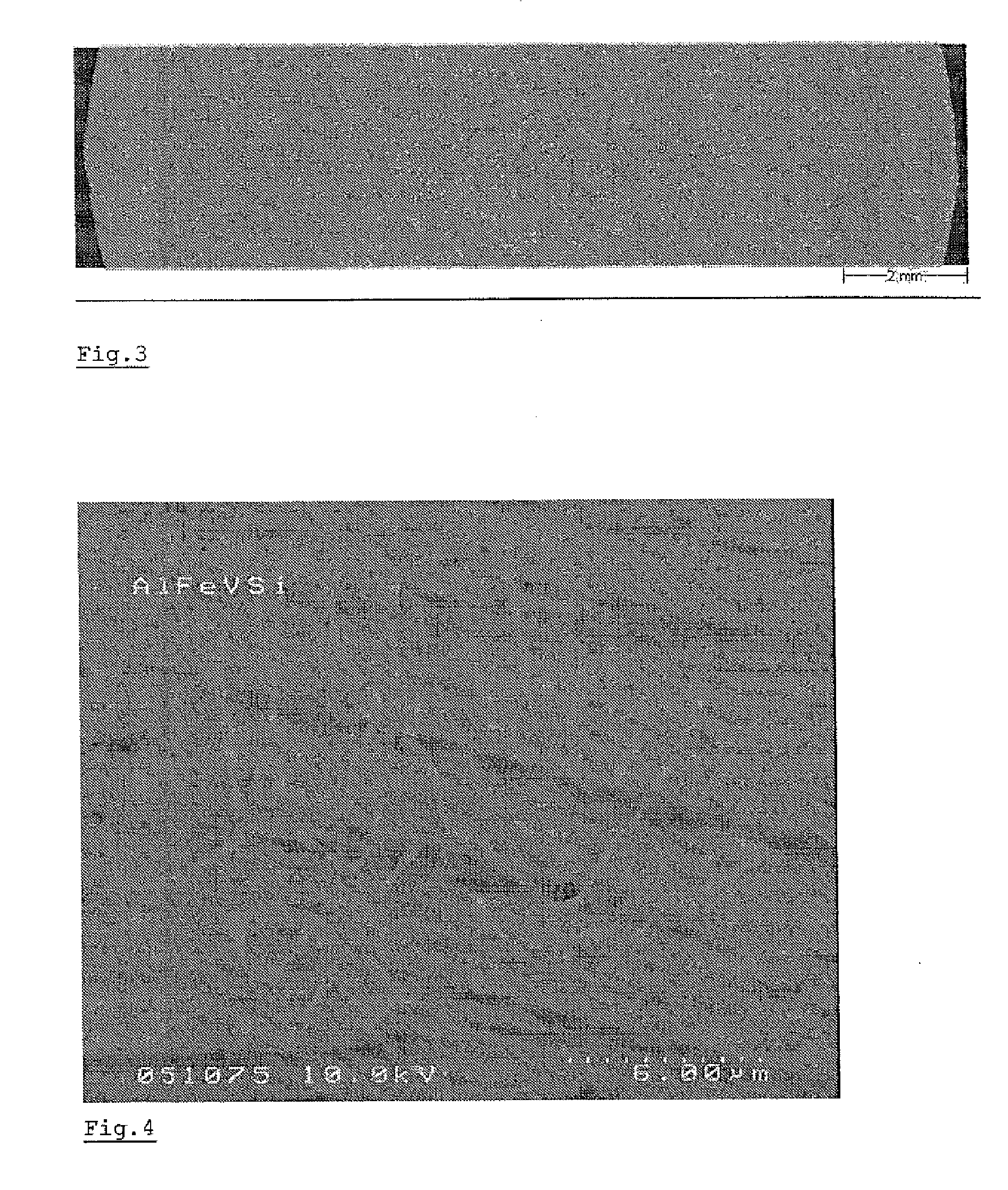Method for Producing a Wear-Resistant Aluminum Alloy,An Aluminum Alloy Obtained According to the Method, and Ues Thereof
a technology of aluminum alloy and aluminum alloy, which is applied in the field of producing a wear-resistant aluminum alloy, can solve the problems of reducing the size of dendrites, and reducing the number of crystal germs/densities
- Summary
- Abstract
- Description
- Claims
- Application Information
AI Technical Summary
Benefits of technology
Problems solved by technology
Method used
Image
Examples
example 2
AlFeCrTi Alloys
[0061]FIG. 6 shows the structural morphology of an Al84.5Fe7Cr6Ti2.5 alloy cast at 700° C., in which case the alloy had no grain-refining elements added and casting was effected in a non-preheated graphite ingot mold (Ø=14 mm). The Al84.5Fe7Cr6Ti2.5 alloy had an elasticity modulus of ERT=104.1 GPa, which declined to E500° C.=83 GPa at 500° C.
[0062]Similarly, the Al84.4Fe7.0Cr6.0Ti2.5 alloy system deposits a dense, yet closed, primary dendrite network (see FIG. 6) analyzed as Al4(Fe, Cr) by means of EDX. The REM images (FIG. 7 (non-etched); FIG. 8 (etched)) reveal deposits of Al4(V,Fe) in addition to the Al3Fe dendrites. A globular substructure is found within the lamellar dendrites. In addition, deposits of Al3(Ti, Cr) are found in the same structure (FIG. 9; REM image, etched).
[0063]As is the case with the 88.5Al8.5Fe1.3V1.7Si alloy, the AlFeCrTi alloy shows a fine, “perlite-like” pattern from eutectic decomposition of the residual melt of the Al84.4Fe7.0Cr6.0Ti2.5 a...
PUM
| Property | Measurement | Unit |
|---|---|---|
| Temperature | aaaaa | aaaaa |
| Temperature | aaaaa | aaaaa |
| Melting point | aaaaa | aaaaa |
Abstract
Description
Claims
Application Information
 Login to View More
Login to View More - R&D
- Intellectual Property
- Life Sciences
- Materials
- Tech Scout
- Unparalleled Data Quality
- Higher Quality Content
- 60% Fewer Hallucinations
Browse by: Latest US Patents, China's latest patents, Technical Efficacy Thesaurus, Application Domain, Technology Topic, Popular Technical Reports.
© 2025 PatSnap. All rights reserved.Legal|Privacy policy|Modern Slavery Act Transparency Statement|Sitemap|About US| Contact US: help@patsnap.com



